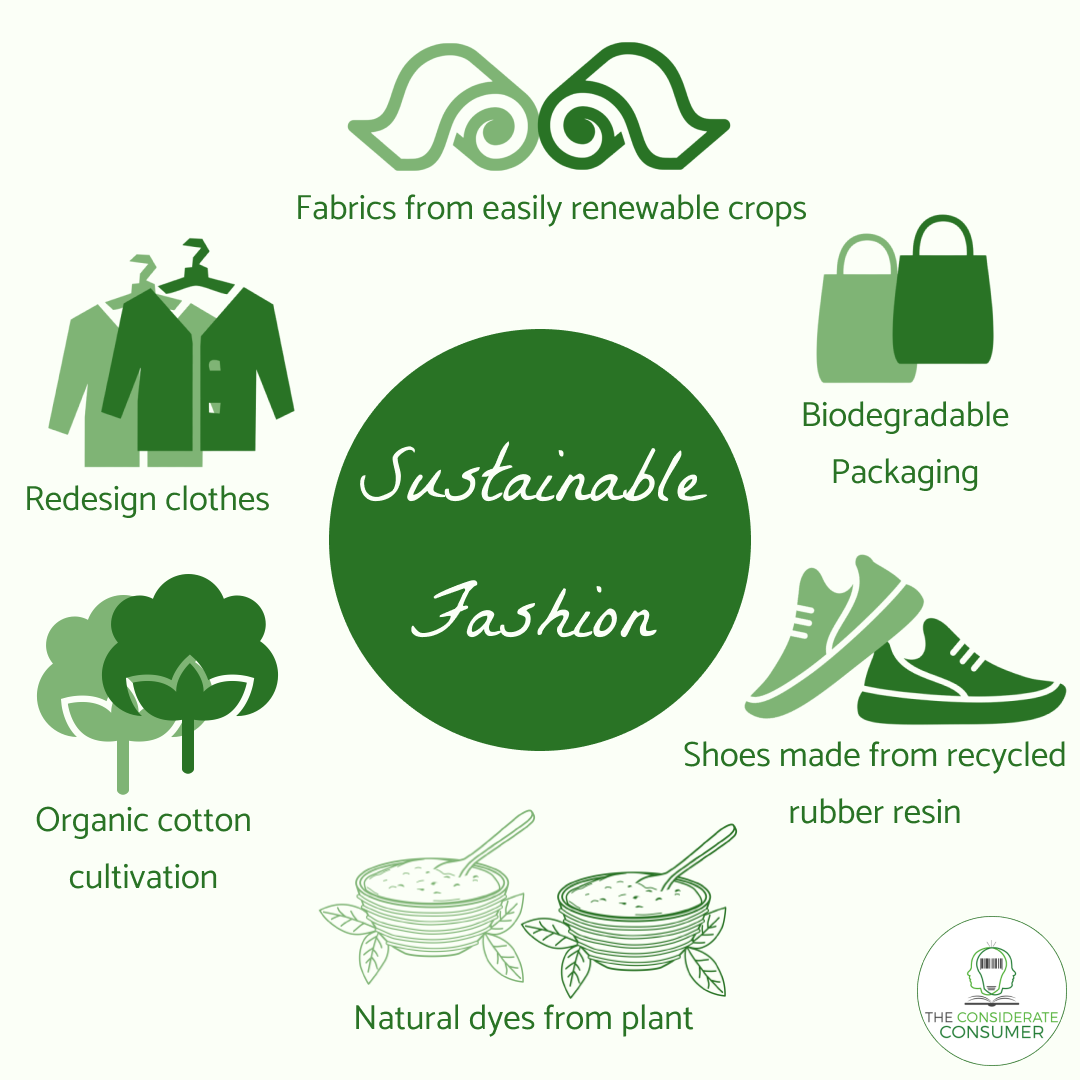Understanding Sustainable Fashion: Concepts, Importance, and Trends
Sustainable fashion is more than just a trendy phrase; it represents a necessary shift in the fashion industry that addresses various environmental and ethical issues. As consumers become increasingly aware of the fashion industry’s impact on the environment and society, sustainable fashion emerges as a responsible choice.

An illustration representing sustainable fashion concepts.
Source: The Considerate Consumer
The term ‘sustainable fashion’ refers to various practices within the fashion industry aimed at minimizing negative environmental impacts. This includes using eco-friendly materials, implementing ethical labor practices, and promoting recycling and circular economy initiatives. Each of these components contributes to a broader strategy aimed at creating a fashion industry that respects both the planet and its inhabitants.
One popular distinction within sustainable fashion is between sustainable fashion and eco fashion. While both concepts aim to promote environmental consciousness, sustainable fashion encompasses a broader array of practices—not just eco-friendly materials but also social equity and ethical production methods.

A visual comparison of sustainable fashion versus eco fashion.
Source: Certilogo
The Importance of Sustainable Fashion
The importance of sustainable fashion cannot be overstated. The fashion industry is one of the largest polluters globally. It involves harmful manufacturing processes, wasteful production practices, and exploitation of laborers in developing countries. Transitioning to sustainable practices not only mitigates environmental harm but also ensures fair labor conditions for workers.
Sustainable fashion serves three primary pillars: environmental preservation, social responsibility, and economic resilience. Addressing these elements creates a holistic approach to fashion that benefits consumers, manufacturers, and society at large.

An infographic depicting the rise of sustainable fashion and ethical apparel.
Source: LinkedIn
Key Trends in Sustainable Fashion
As the demand for sustainable and ethical fashion continues to grow, various trends are emerging within the industry.
- Innovation in Materials: Many brands are turning to innovative and recycled materials, significantly reducing their carbon footprint and resource consumption.
- Direct-to-Consumer Sales: Many brands are bypassing traditional retail channels, opting instead for direct-to-consumer sales which can reduce waste and carbon footprints from distribution.
- Transparency and Traceability: Today’s consumers seek transparency about where and how products are made, encouraging brands to be more open about their sourcing and production processes.

An infographic highlighting key trends in sustainable fashion.
Source: SANVT
How to Choose Sustainable Fashion
Choosing sustainable fashion involves understanding not just the materials used but also the practices implemented by companies. Look for brands that use organic or recycled materials, promote fair labor practices, and demonstrate a commitment to reducing waste through take-back programs or recycling initiatives.
Additionally, consider quality over quantity. Sustainable fashion encourages the purchase of fewer but higher-quality pieces that can last longer, thereby reducing waste in the long run.

An illustration depicting the relationship between sustainable fashion and eco design.
Source: HAY-HAY
The Future of Sustainable Fashion
As awareness continues to grow, the future of sustainable fashion looks promising. More brands are committing to transparent practices, innovation, and ethical manufacturing processes, paving the way for a sustainable industry that promotes environmental stewardship and social responsibility.
Ultimately, sustainable fashion is not just a trend but a movement towards a more responsible and greener future in apparel. By making informed choices, consumers can contribute to a global culture that values sustainability.